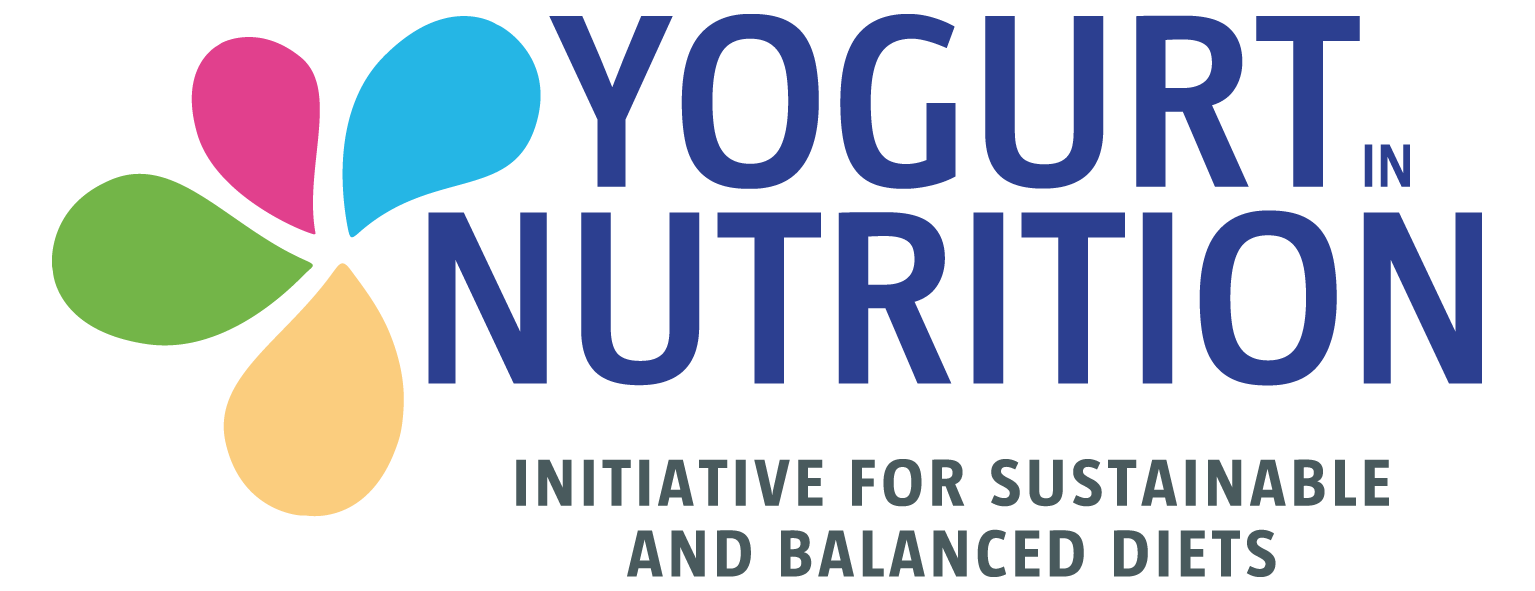 As part of the scientific sessions, organized at the annual Experimental Biology meetings (2-6 April, 2016) in San Diego, US, the Yogurt in Nutrition Initiative for a Balanced Diet gathered highly respected experts in this area, according to the following scientific program: ‘Yogurt & (Type 2) Diabetes, translating science into practices‘.
As part of the scientific sessions, organized at the annual Experimental Biology meetings (2-6 April, 2016) in San Diego, US, the Yogurt in Nutrition Initiative for a Balanced Diet gathered highly respected experts in this area, according to the following scientific program: ‘Yogurt & (Type 2) Diabetes, translating science into practices‘.
Speakers presentations provided a complete overview of the T2 Diabetes issue and have framed the beneficial role of yogurt consumption, as a part of a healthy diet and lifestyle, in the reduction of the incidence of the disease. Moreover, new data coming from an economic model, applied on UK population, unveiled that reducing the risk of developing T2 Diabetes through increased yogurt consumption, would relieve pressure on the health care infrastructures and improve quality of life of the population. T2 Diabetes is a chronic metabolic disease, whose prevalence is growing worldwide. By 2035, it is expected that the number of people with prediabetes will rise up to 471 million, or 8% of the adult population worldwide. The high cost for society is also escalating. However, scientific data show that it is possible to prevent or delay the disease by maintaining a healthy weight, having healthy food habits and being active. The invited experts reviewed and discussed the specific effects of yogurt in relation to this issue.
Evidence for beneficial effects of yogurt on T2 Diabetes
Taking into account the controversy on dairy products and T2 Diabetes prevention, Professor Jordi Salas-Salvadό – well known for his expertise in obesity and metabolic diseases – reviewed the epidemiological studies, evaluating the association between yogurt consumption, and risk of development of T2 diabetes. Even if clinical trials are warranted to confirm the beneficial effects on insulin sensitivity, there was clear evidence from observational studies that yogurt consumption was associated with a lower T2 Diabetes risk. This potentially protective role was observed in healthy subjects, as well as in older adults at high cardiovascular risk, independently of the yogurt fat content.
From the effect on blood glucose…
Several mechanisms have been proposed to explain the association between yogurt consumption and reduced risk for developing T2 Diabetes. The effect of yogurt on postprandial glucose and insulin responses is one of them. This was the object of the talk by Professor Thomas Wolever. There is excellent evidence that diets with low glycemic index (GI) or low glycemic load (GL) reduce the risk for developing T2 Diabetes. Yogurt (plain and sweetened) has an overall low GI, due to its lactose and protein content. Relative to other carbohydrate foods, dairy foods, like yogurt, cause surprisingly a disproportionately high insulin response. A high insulin response is considered to be deleterious, because hypersinsulinemia is associated with insulin resistance and increased risk for T2 Diabetes. However, yogurt, whether consumed alone or as a part of mixed meals, likely elicits similar or a lower insulin response, compared to other meals or snacks. Therefore, choosing yogurt instead of other protein and carbohydrate sources, as part of a healthy dietary pattern, may assist in reducing the diet GI and then the risk for T2 diabetes.
… to the role of microbiota
A more recent proposed mechanism is the interaction with gut microbiota: while obesity is one of the main T2 Diabetes risk factors, the gut microbiota has been shown to influence the development of obesity. Therefore, understanding microbial interactions with the host may provide potential options for therapy. Dr Li Wen gave an overview of the research progress in relation to the diet induced alteration of gut microbiota and its effects on metabolism. She also presented the results of specific studies on gut microbiota and immune populations, carried out in obese patients with or without T2 Diabetes and undergoing bypass surgery.
Which strategy for T2 Diabetes prevention?
Without intervention, 15% to 30% of people with prediabetes (that’s 1 out of 3 adults! in the US) will develop type 2 diabetes within 5 years. Constance Brown-Riggs, a registered dietitian and certified diabetes educator, discussed the outcomes of prevention programs and importance of healthy diet, including yogurt. Several randomized clinical trials have shown that individuals at high risk for developing diabetes can be given interventions that significantly decrease the rate of onset of diabetes. The two largest diabetes prevention studies, the United States Diabetes Prevention Program (DPP) and the Finnish Diabetes Prevention Study (DPS) have both shown beneficial effects of lifestyle interventions. Their results indicate that high-risk people can delay or avoid developing T2 Diabetes by losing weight through regular physical activity and a diet low in fat and calories. Evidence also suggests that healthful diet patterns including yogurt, like DASH and Mediterranean diets, may be associated with a reduced risk of T2 Diabetes.
Promoting yogurt consumption as a more global and effective strategy
Dr Angelo Tremblay pointed out that some foods might influence the overall quality of the diet, due to their intrinsic composition, but also to their potential to modify the rest of food consumption, presumably via effects on appetite control. Yogurt seems to be part of these specific foods. Yogurt consumers have a greater intake in key nutrients, such as minerals (calcium, potassium, magnesium, zinc), vitamins (vitamin B2, B12, D) and protein, compared to non-consumers. Among both children and adults, frequent yogurt consumers have significantly better diet quality than infrequent consumers do. In addition, yogurt consumers tend to eat less fast food, french fries and fried foods, processed and red meats, pizza, snacks, regular soft drinks or alcohol. Besides, yogurt consumers seem to exhibit some behaviors, such as reduced smoking and a more active lifestyle. All this research suggests that yogurt consumption might represent a global signature of a healthy diet and lifestyle.
Towards substantial public health cost savings
Professor Andrew M. Prentice presented the potential economic impact of yogurt consumption in relation to a decrease in T2 Diabetes risk. Costs for T2 Diabetes management were taken into consideration, as well as hospital and outpatient costs for treating T2 Diabetes-related complications. Using highly conservative assumptions, the expert concluded on substantial savings to the UK National Health Service: approximately £2.3 billion over 25 years. Moreover, a significant gain in quality of life might be achieved. The professor reached the conclusion that the promotion of yogurt consumption could, in the long term, contribute to a reduction in the prevalence of T2D, the associated burden of disease and related health costs.
How to put it into practice
The 4th Yogurt Summit finally discussed how to take advantage of yogurt in practical terms. A special session was organized by two registered dietitians – Azmina Govindji and Megrette Fletcher. Azmina Govindji presented different simulations of yogurt swapping and how this may help to save calories and to incease nutrient density. Eating yogurt instead of other snacks, could also help increasing the volume/weight of food consumed without increasing calories. According to US Dietary Guidelines 2015-2020, choosing lower fat versions of milk, yogurt, and cheese should be recommended. Megrette Fletcher introduced the ‘Mindful Eating Cycle’, which reminds us of the importance of using our senses and listening to our body to make the right food choices, at the right time, in the right circumstances, and in the right quantity.
Enjoying a tasty yogurt session to close the event
The event ended with a unique tasting session, where two special guests – Hubert Cormier (registered dietitian) and Cheryl Sternman Rule (food writer and blogger) – treated the assembly with several tasty yogurt-based recipes, such as: “Labneh with Tomatoes, Pesto, and Tapenade”, “Coriander-Lime Chicken”, “Lentil patties served on hamburger buns” and “Goat’s cheese, grape and pecan balls”. We were also delighted to enjoy a yogurt bar with plenty of sweetened and savory toppings to create a custom recipe and share it on Twitter. A “conviction wall” was also deployed out of the room to invite everyone to share a conviction message after the summit.
Find here the abstract book.






